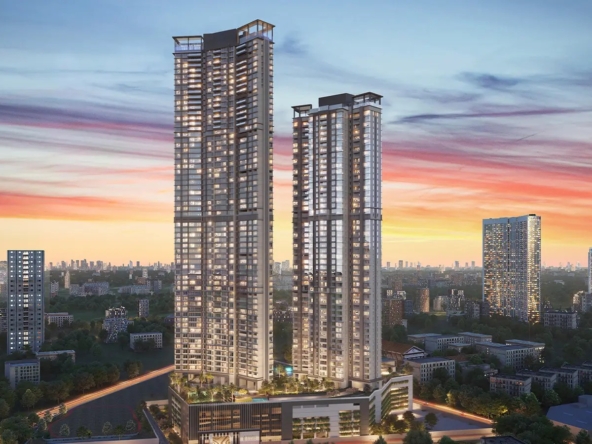Mumbai property market has overcome a national drop in house sales by reaching all-time high property registrations and stamp duty income in the first half of 2025. Driven by high buyer confidence, demand for premium homes, and continuous infrastructure improvements, Mumbais property market showed resilience although most big Indian cities suffered significant declines in housing demand.
Record-Breaking Registrations in H1 2025
Mumbai registered 75,672 property registrations from January to June 2025, a 4% increase over the comparable period in 2024, according statistics from the Maharashtra State Revenue Department. This represents the most half-yearly registration number in the past ten years. At 6,699 crore, up 14% from 5,874 crore in H1 2024, the city’s stamp duty income also saw a rise. March 2025 was a peak month with 15,501 registrations and over 1,589 crore in stamp duty, driven by buyers rushing to finish transactions before a 3.9% rise in ready reckoner rates for FY26.
June 2025: A Slight Dip but Strong Revenue
Mumbai recorded 11,599 property registrations in June 2025 inside the jurisdiction of the Brihanmumbai Municipal Corporation (BMC), indicating a slight 6% year-on-year decrease. Even so, stamp duty income increased by 2%, pointing to a shift in the markets toward high-value transactions. With the city regularly registering over 11,000 registrations monthly, about 80% of these were residential units—a great advancement over pre-pandemic figures.
Growing Demand for Premium and Spacious Homes
Buyer preferences in Mumbai are shifting toward luxury and larger homes. Properties priced above ₹5 crore increased their registration share from 5% in June 2024 to 6% in June 2025. High-value transactions, including record-setting deals like Leena Tewari’s ₹2.83 lakh per sq ft purchase in Worli, have boosted revenue. Additionally, apartments sized 1,000–2,000 sq ft grew in popularity, with their market share rising from 8% to 13%, while smaller units (up to 500 sq ft) saw a decline from 48% to 38%.
Suburbs Lead, Infrastructure Fuels Growth
With 88% of registrations in H1 2025, the Western and Central Suburbs continue to lead. Driven by fresh launches and buyer demand in developing micro-markets, the Central Suburbs in particular saw their percentage rise from 29% to 34%. Important infrastructural projects like the Coastal Road, Mumbai Trans Harbour Link, and Navi Mumbai International Airport have improved connectivity, therefore maintaining demand throughout core and peripheral regions.
Mumbai Outperforms Amid National Slump
Although housing sales in the wider Mumbai Metropolitan Region (MMR) declined 34% (62,890 units in H1 2025 vs 84,465 in H1 2024), Mumbais core market stood a gleaming spot. Experts credit this toughness to steady interest rates, stable economic conditions, and rising expectations for luxury life. With predicted interest rate cuts set to further boost confidence, industry leaders like Shishir Baijal of Knight Frank India stress that Mumbais real estate market is positioned for ongoing expansion.
Mumbais astounding showing in 2025 highlights its status as Indias most resilient real estate center and sets a standard for urban housing markets throughout.
Sources: Maharashtra State Revenue Department, Knight Frank India, ANAROCK
Mumbai Housing Market Defies National Slump with Record First-Half Sales





